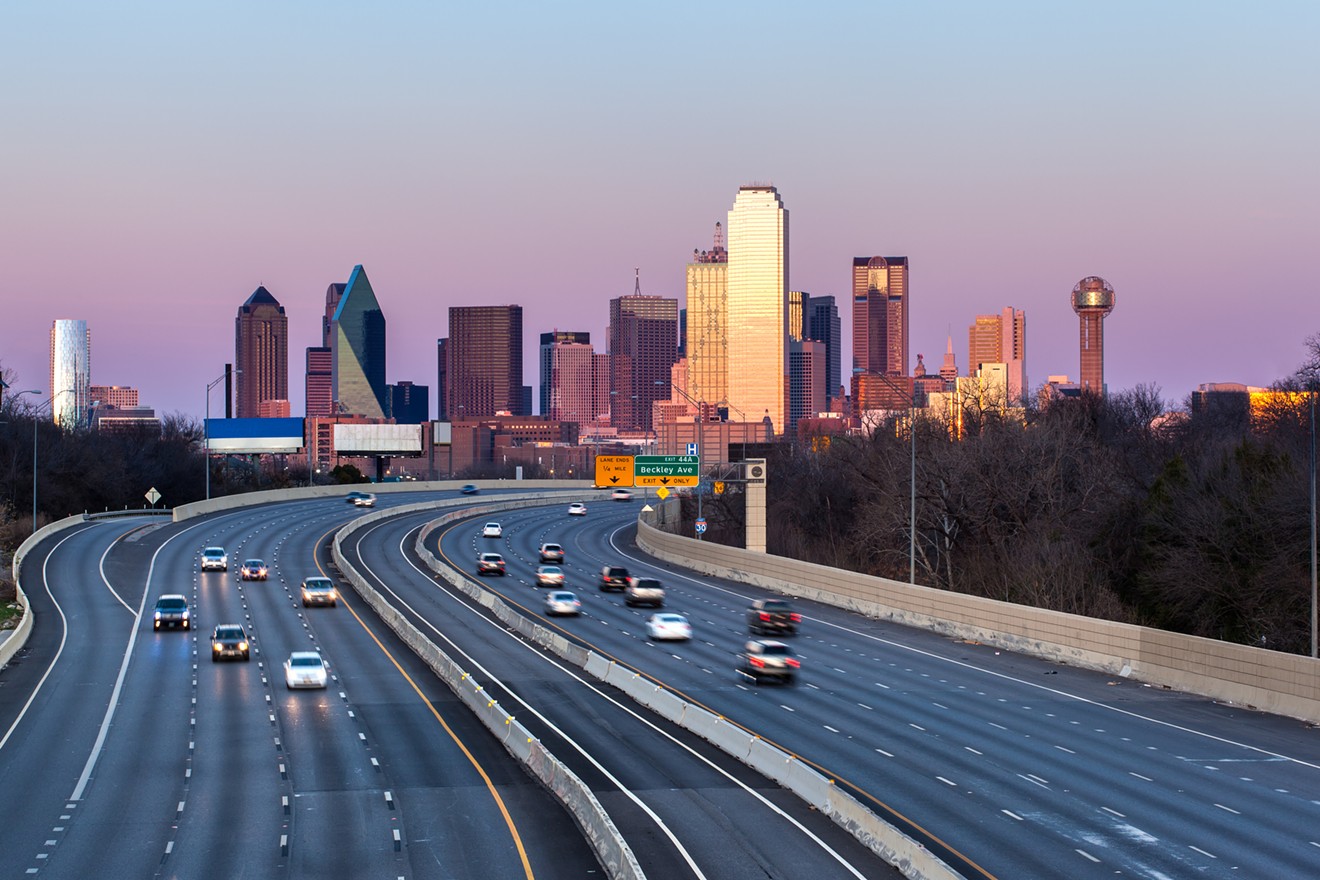Greenhouse gas emissions from transportation in the DFW area went up a startling 27% per person between 1990 and 2017, according to new data released from Boston University's Database of Road Transportation Emissions and analyzed by The New York Times.
Using the emissions numbers and census data, the newspaper created interactive maps and graphics that show overall changes in transportation emissions in the major United States metro areas. Across the country emissions from transportation have increased, as has the number of cars on the road. But in some cities, this type of emissions per person has grown much faster than in others.
Of the 10 most populous cities listed by the U.S. Census Bureau, DFW's emissions increased more than all but one city. Only Chicago, whose per capita emissions increased by 43% over that time period, was higher than DFW.
In just the city of Dallas though, emissions on roads have decreased over the last decade, said James McGuire, director of the city's office of Environmental Quality and Sustainability.
“Dallas’ emissions are just a subset of the DFW regional emissions, but it is interesting to note that we are seeing higher regional on-road GHG emissions even as those ... from the urban center are leveling off or decreasing,” McGuire said in an email.
These high numbers can partially be explained by an increase in cars on the road and population. According to the Bureau of Transportation, the number of vehicles on the road between 1990 and 2017 (the date range during which these statistics were gathered) rose from 193 million to 272 million.
The U.S. Census bureau also said that in 2018 DFW grew more — adding 146,000 people — than any other U.S. metro area. More people certainly lead to more cars on the road, especially when an estimated 76% of drivers are alone in their vehicles, according to numbers tabulated by Data USA.
The average commute time in DFW — 26.6 minutes — is also about a minute longer than the national average and has steadily crept up over the last five years, according to Data USA.
But in Los Angeles, where most families own two cars, as is the case in DFW, and commute times average 29.2 minutes, transportation emissions have gone down 2% per capita since 1990.
According to the Environmental Protection Agency, transportation produces more greenhouse gas emissions than any other industry — 29% of the total. But in California, according to the Energy Information Administration, transportation emissions account for 24.6% of the total, while in Texas it's 74.8%.
As part of the city of Dallas' recently announced Climate Action Plan, residents are invited to fill out a community and business survey before Oct. 31 and give their opinions about ways to cut down on emissions from transportation and electricity, which is the second-highest source of emissions, McGuire said.
“[W]e are currently working toward developing a better understanding of our regional GHG emissions to inform future policy choices,” he said.
[
{
"name": "Air - MediumRectangle - Inline Content - Mobile Display Size",
"component": "18855504",
"insertPoint": "2",
"requiredCountToDisplay": "2"
},{
"name": "Editor Picks",
"component": "17105533",
"insertPoint": "4",
"requiredCountToDisplay": "1"
},{
"name": "Inline Links",
"component": "18349797",
"insertPoint": "8th",
"startingPoint": 8,
"requiredCountToDisplay": "7",
"maxInsertions": 25
},{
"name": "Air - MediumRectangle - Combo - Inline Content",
"component": "17105532",
"insertPoint": "8th",
"startingPoint": 8,
"requiredCountToDisplay": "7",
"maxInsertions": 25
},{
"name": "Inline Links",
"component": "18349797",
"insertPoint": "8th",
"startingPoint": 12,
"requiredCountToDisplay": "11",
"maxInsertions": 25
},{
"name": "Air - Leaderboard Tower - Combo - Inline Content",
"component": "17105535",
"insertPoint": "8th",
"startingPoint": 12,
"requiredCountToDisplay": "11",
"maxInsertions": 25
}
]












